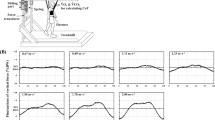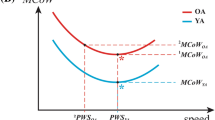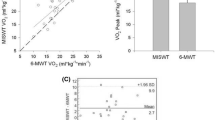Abstract
Objectives: To assess the influence of stature on the basal metabolic rate (BMR) and on the energy cost of standardised walking. A second objective was assess the accuracy of the FAO/UNU/WHO (1985) equations to predict BMR.
Design/subjects: Forty-six young men were selected on the basis of their stature and assigned to the group of short, S (n=25, mean stature=1.65±0.03 m) or of tall, T (n=21, mean stature=1.87±0.04 m).
Setting: Rome, Italy.
Interventions: Body composition was assessed by underwater weighing. BMR and energy cost walking at 5 km/h was measured by the Douglas bag.
Results: Body fat % was similar in the two groups (15.2±4.3 for S; 17.4±5.3 for T; ns). The BMR of T was 20% higher than that of S, but 12% and 10% lower when standardised respectively for body weight (BW) and fat free mass (FFM). However these differences were removed when BMR was covaried for BW or FFM, or normalised by BW0.62 or FFM0.64. Measured BMR was 7% for T and 6% for S lower than that predicted by the equation; the inclusion of stature did not reduce the overestimation. The energy cost of walking was 27% higher in T than in S, but 9% and 5% lower when standardised respectively for BW and FFM. The differences disappeared when expressing the energy cost of walking as net cost per kg FFM.
Conclusions: Tall people have lower BMR per unit of BW or FFM than short people, and it is necessary to control for the diverse body mass by the appropriate method. However, qualitative differences in the composition of FFM are plausible, due to the diverse proportion of metabolically active internal organs in people of different height, which might be reflected in the higher BMR/kg FFM of the shorter subjects. The sex- and age-specific equation significantly overestimates the BMR of both short and tall people, but there is no simple explanation of this observation. The energy cost of walking is not affected by stature when expressed as net cost per kg FFM.
Sponsorship: National Research Council (CNR), Italy, Target Project ‘Prevention and Control Disease Factors,’ Subproject ‘Nutrition’ no. 94.00686 PF 41.
Similar content being viewed by others
Author information
Authors and Affiliations
Rights and permissions
About this article
Cite this article
Censi, L., Toti, E., Pastore, G. et al. The basal metabolic rate and energy cost of standardised walking of short and tall men. Eur J Clin Nutr 52, 441–446 (1998). https://doi.org/10.1038/sj.ejcn.1600585
Received:
Revised:
Accepted:
Published:
Issue Date:
DOI: https://doi.org/10.1038/sj.ejcn.1600585
- Springer Nature Limited




